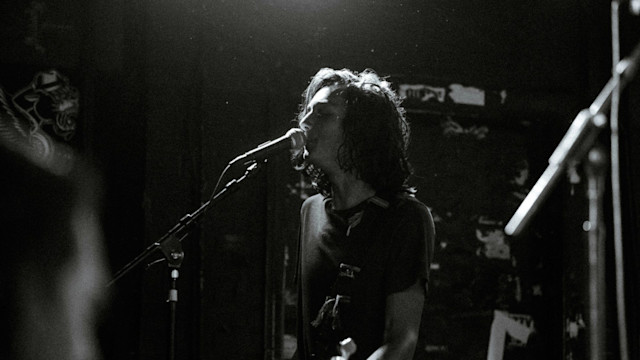What Is A Bridge In Music? Meaning & How To Use It
November 8, 2024 - What is a bridge in music? Learn its purpose, and how to use it effectively to add contrast, create emotional depth, and elevate your song's structure.

When you listen to a song, there are the familiar parts: an opening verse that sets the mood and a catchy chorus, then the second verse, followed by a repeat of the chorus. This overall structure is easy to sing along with.
But a special part of the song, known as the bridge, often adds contrast and refreshes your ears before the final chorus.
This section of music provides new musical ideas or lyrical content that stand apart from the rest of the song while preparing you for a return to the main structure.
The bridge is one of my favorite parts to write; it's the perfect place to step away from the familiar main idea and help highlight the last chorus of the song.
In most songs, the bridge connects different sections. A great bridge introduces variety and depth while ensuring a pleasing transition back to the song's main themes. This might include a melody, rhythm, or lyrics shift that evokes surprise or emotion, making your listening experience more engaging.
As a songwriter, you can craft a dynamic story by weaving in a bridge and helping the main sections to hit the most emotional and memorable hooks.
The interplay of these parts creates a richer and more immersive listening experience, inviting the listener in and leaving them wanting more every time they hear the song.
Understanding the Structure of a Song
Each part of the song plays a distinct role. The main components, verses and choruses, shape the overall sound, while the bridge adds variance. Understanding these elements can help you improve the emotional impact your songs have on the listeners.
The Main Components
A typical song is built from various sections that fit together seamlessly:
The Verse
The verse sets the scene, providing background and story. This part usually has different lyrics for each occurrence, keeping the narrative moving. You might find that the melody in the verse is more subdued to let the lyrics take center stage.
The Chorus
The chorus includes the main hook of the song. It features repetitive lyrics and catchy melodies that stick with you. Generally, the chorus is more energetic than the verse. The repetitive nature makes it memorable, echoing the song's main theme or message.
Other Elements
Other elements, such as intros and outros, bookend your song, and pre-choruses build anticipation. Each component adds depth and helps draw in the listener.
The Role of the Bridge

The purpose of the bridge is to provide a refreshing change of pace. It introduces new musical ideas, adding contrast and variety. You typically find the bridge appearing after the second chorus, creating a sense of progression and evolution in the song, providing a turning point.
While the bridge may feature new melodies or lyrics, it always complements the rest of the composition. It's a chance to explore different emotions, add tension, or provide a moment of reflection.
Good bridge lyrics introduce new information that the listener hasn't heard yet in the main parts of the song.
Employing a well-crafted bridge can enhance the song's emotional effect by strategically shifting the song's dynamics, keeping the listeners engaged and offering them something unexpected and fresh.
What Is a Bridge in Music?
Characteristics of a Bridge
The bridge section often introduces a new chord progression or even a key change, creating contrast with the rest of the song. It offers an opportunity for different lyrics, either to advance the story or add depth to the song's theme.
A bridge serves the purpose of breaking the repetitive cycle of verses and choruses. It can bring a new emotional shift, making the overall song more dynamic.
Variations in Musical Composition
There are many different different approaches you can use to integrate a bridge into a song.
Sometimes the bridge incorporates a dramatic tempo change or a shift in instrumentation, bringing a unique flair to the piece.
Introducing a new instrument that hasn't been featured in the song until the bridge can also be a very effective way to provide a unique moment in the song.
Another great trick is to significantly deviate in the bridge from the main structure. Unexpected variation keeps the listener intrigued and can highlight the creativity and versatility of the composition.
By incorporating these elements, the bridge plays a crucial role in elevating the song's texture and emotional arc, resulting in a memorable and impactful musical piece.
The Impact of A Bridge on Listeners
Creating Emotional Depth
The emotional pivot provided by the song’s bridge can help evoke a change in emotional intensity as the music shifts. This can range from a uplifting burst to a reflective pause.
A good example would be to have the lyrics in the bridge contrast with other sections and provide additional and often surprising new details, as this can deepen the listener's emotional response. You're basically giving the listeners a plot twist outside the song's core lyrical and musical themes.
Maintaining Listener’s Attention
To keep the listener engaged, you should introduce variety and progression. A harmonic shift like a key change or a different chord progression with a unique, new melody can help capture the listener's attention by breaking predictability.
New elements help reset focus, drawing listeners back into the music and making the return to the song's familiar chorus even more effective. It's a strategic pause that helps highlight the main themes.
The bridge can be instrumental or vocal, but its purpose either way is to engage the listener with a surprising transition.
I always make sure to switch the feel of the song in the bridge; if the chorus is high energy and driven, I often transition to a bridge that is softer and more emotional. Using it as a contrasting section this way helps really drive home the last chorus.
Examples of Iconic Bridges
There are many great examples of bridges in popular music that serve as transformative moments that elevate a song's emotion and progression.
Bridges in Pop Music
In pop music, bridges often inject a burst of creativity. A prime example is Lady Gaga's Bad Romance, featuring a bridge that dramatically shifts the song's energy and intensity. You can feel the power and emotion as the song transitions, creating a memorable impact.
Another one of my favorite artists and writers that use the bridge very effectively is Taylor Swift. Her song All Too Well includes a bridge that not only alters the musical landscape but also deepens the story's narrative. You find yourself being drawn deeper into the song’s story, feeling every emotion conveyed in detail.
Historical Impact on Music
Bridges have long played a crucial role in song structure.
The Beach Boys' Good Vibrations showcases an iconic bridge, with harmonies and melodies that transport you, creating a vivid auditory experience. This innovative use of the bridge has influenced countless artists since its release in 1966.
Michael Jackson's music features bridges that often elevate his tracks to legendary status. In songs like Billie Jean, the instrumental bridge introducing strings and holding a pedal tone tonic through most of the section shifts the mood and keeps you engaged. The buildup is just amazing, and makes you really want to hear that last chorus again.
Such examples highlight the bridge's importance as a powerful tool in music composition.
Conclusion
The bridge is more than just another section of a song; it’s a key element that can elevate your work from predictable to powerful.
Use the bridge to inject enough variation to keep your listeners engaged, whether through a new key, new melody or unexpected lyrical content. This can help create a smooth transition between sections and offer a new perspective that makes the return to the chorus feel fresh and impactful.
Your song’s narrative will be richer, and listeners will be drawn in by the creative ways you guide them through different parts of your composition.
Push the boundaries of your song’s structure and watch it leave a lasting impression on everyone who hears it.
About the author
Tero Potila is a professional music composer and producer. His career combining knowledge and experience from music, TV, film, ad, and game industries gives him a unique perspective that he shares through posts on teropotila.com.
Get started with Soundtrap today!